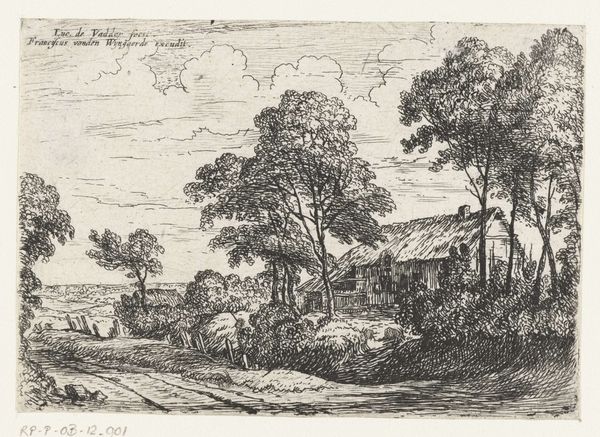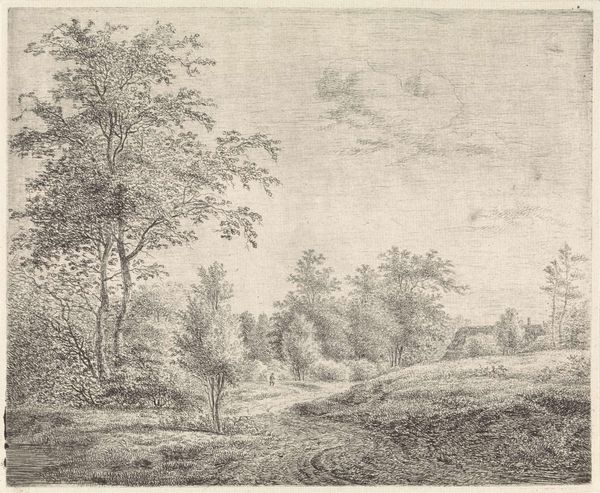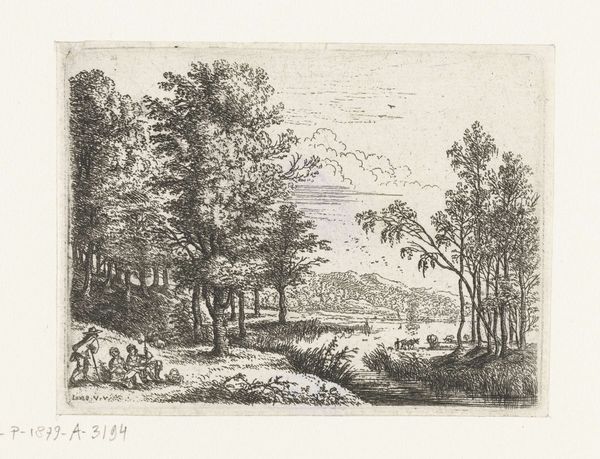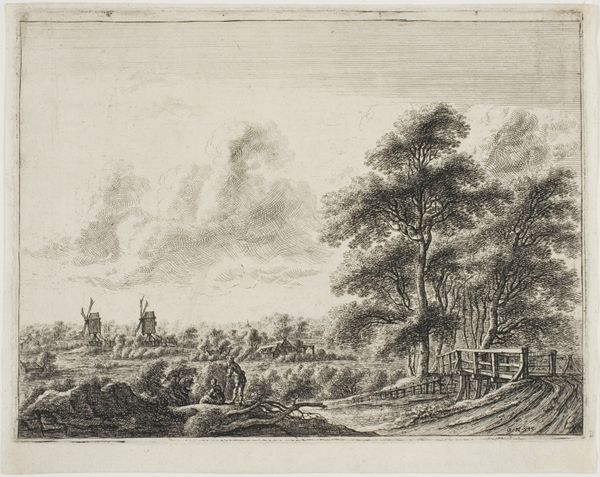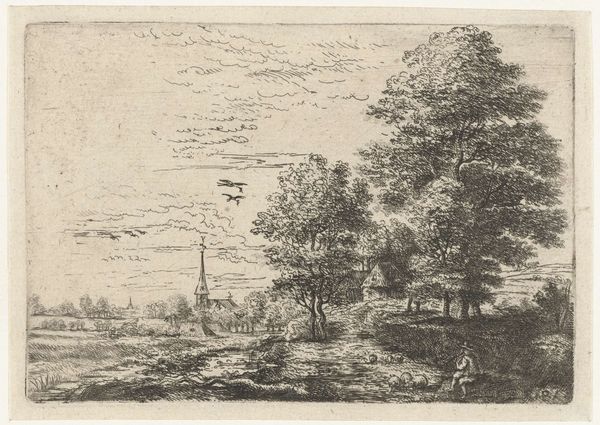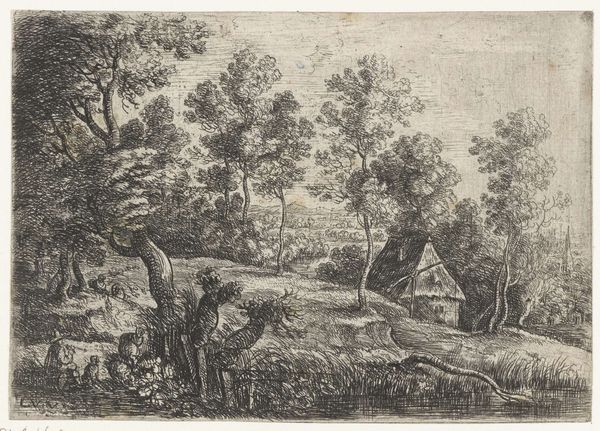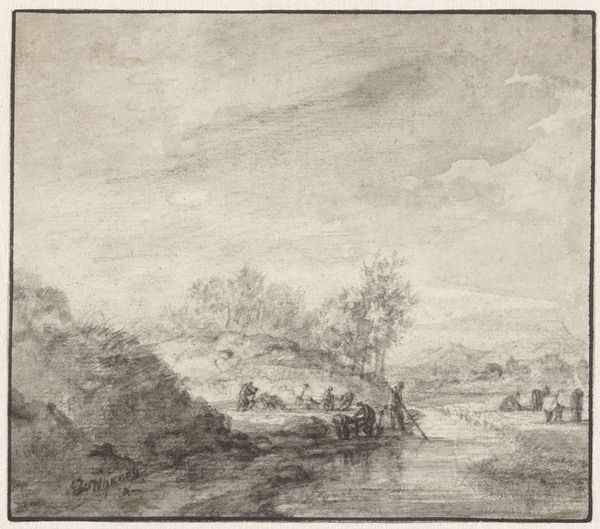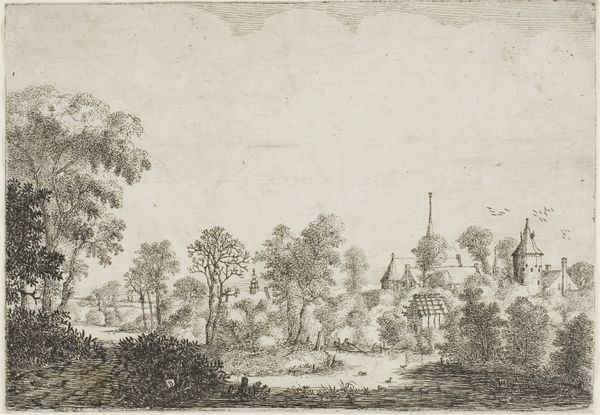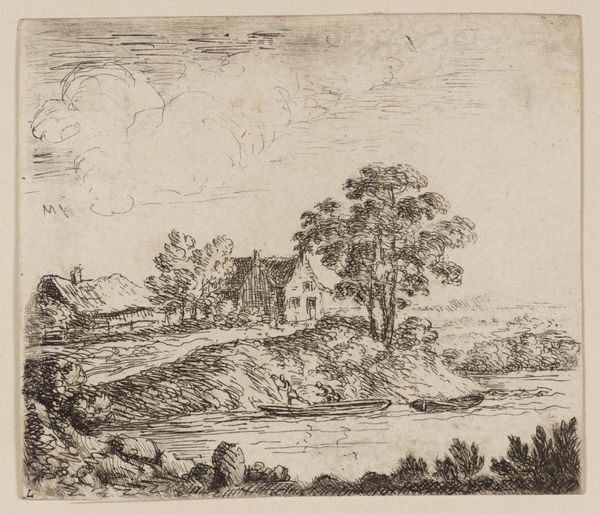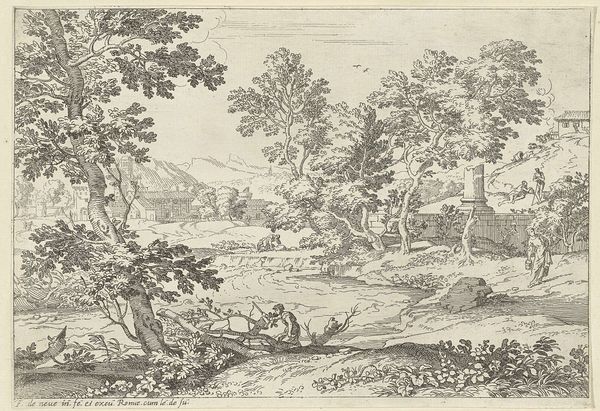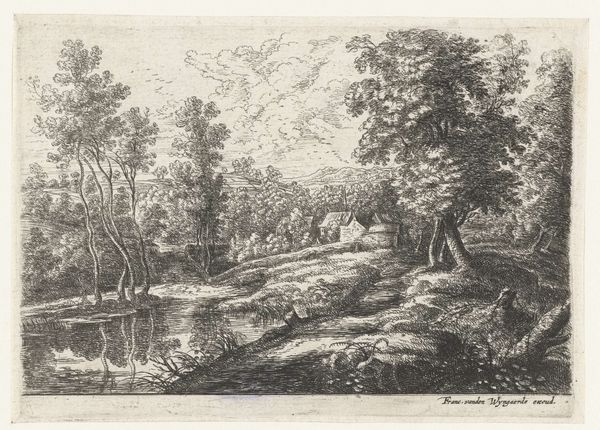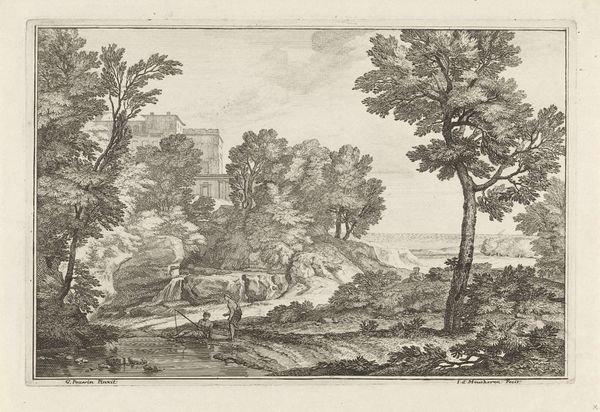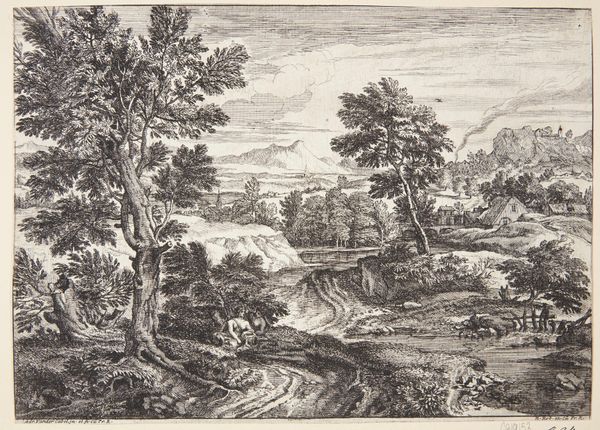
drawing, etching, pen
#
drawing
#
dutch-golden-age
#
pen sketch
#
etching
#
pencil sketch
#
landscape
#
pen
#
cityscape
#
realism
Dimensions: height 84 mm, width 109 mm
Copyright: Rijks Museum: Open Domain
Curator: Philips Augustijn Immenraet created this work, "Landschap met een herder," sometime between 1637 and 1679. It's a Dutch Golden Age landscape currently housed at the Rijksmuseum. It looks like an etching, with pen and ink as well. Editor: It feels immediately familiar, a sense of pastoral calm underscored by the intricacy of the etched lines. There’s a humbleness to its creation. I find the shepherd particularly compelling, set amidst a humble yet sturdy landscape. Curator: Right, etching allowed for multiples, wider distribution. It moves art into a kind of early mass production, so it connects to expanding markets and ideas about value. What about the specific imagery grabs you? Editor: The steeple, beyond the humble rooftops, signifies something loftier, guiding people to God while also reminding one of societal structures. See also the trees reaching heavenward in the corner. They are all tied into place by this grounded village and everyday laborers. What kind of inks would be typically utilized for prints such as this? Curator: Inks would've been based on readily available materials, plant-derived tannins for the brown hues perhaps, combined with soot or charcoal to provide darkness. Consider the socioeconomic status of the artist, too – did they prepare their inks, or buy from someone who did? This is often telling of their art-making methods. Editor: It emphasizes how accessible landscape imagery was, making this beautiful outdoor scenery attainable for any household, the wealthy, and likely a new and burgeoning merchant class, too. This visual motif continues into our current era. Curator: And also, remember that an etching needs to be pressed. This relies upon manual labour in its printing process – another human interaction and industrialisation component worthy of noting. Editor: It speaks to this persistent desire to imprint meaning and permanence onto transient experience. It goes beyond a basic landscape and depicts people building a structured and sustained community. Curator: Indeed. Immenraet's work provides a beautiful window into understanding a broader relationship to material production and what this all truly represents within Dutch society at that time. Editor: I concur, and seeing the humble but stalwart laborer against the horizon with a rising cathedral steeple speaks to the value that culture gives itself, then and now.
Comments
No comments
Be the first to comment and join the conversation on the ultimate creative platform.
